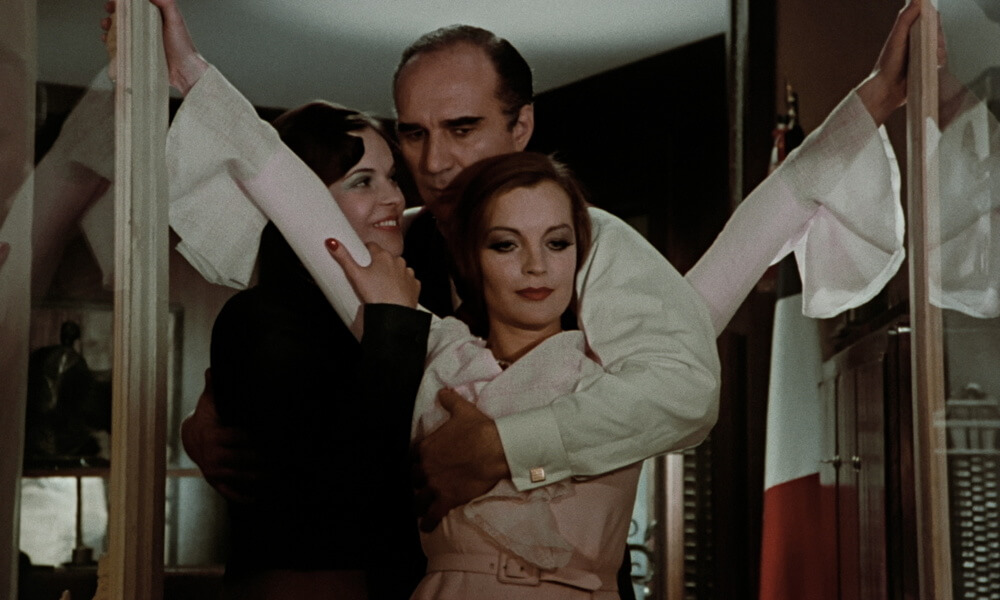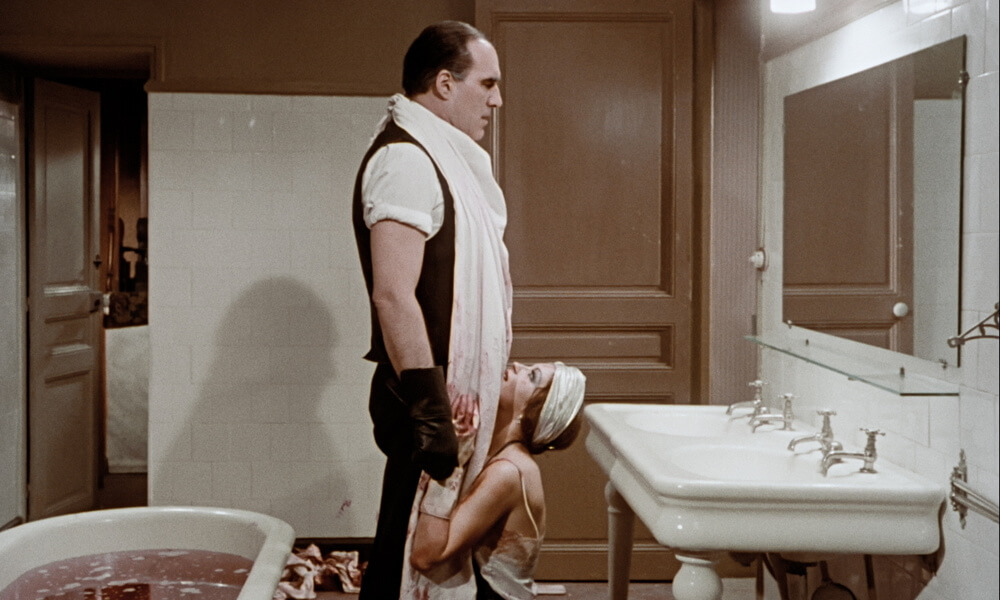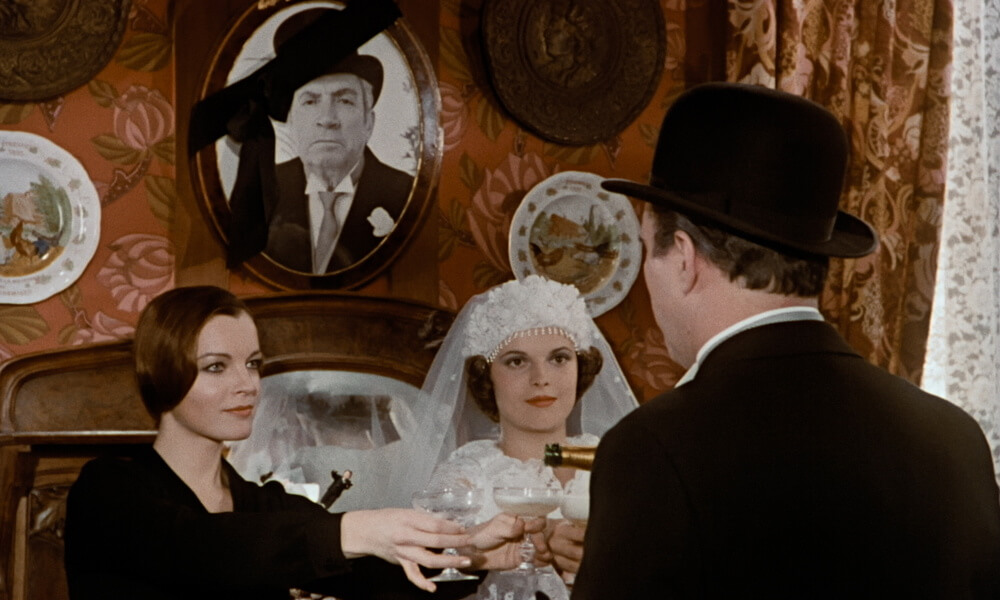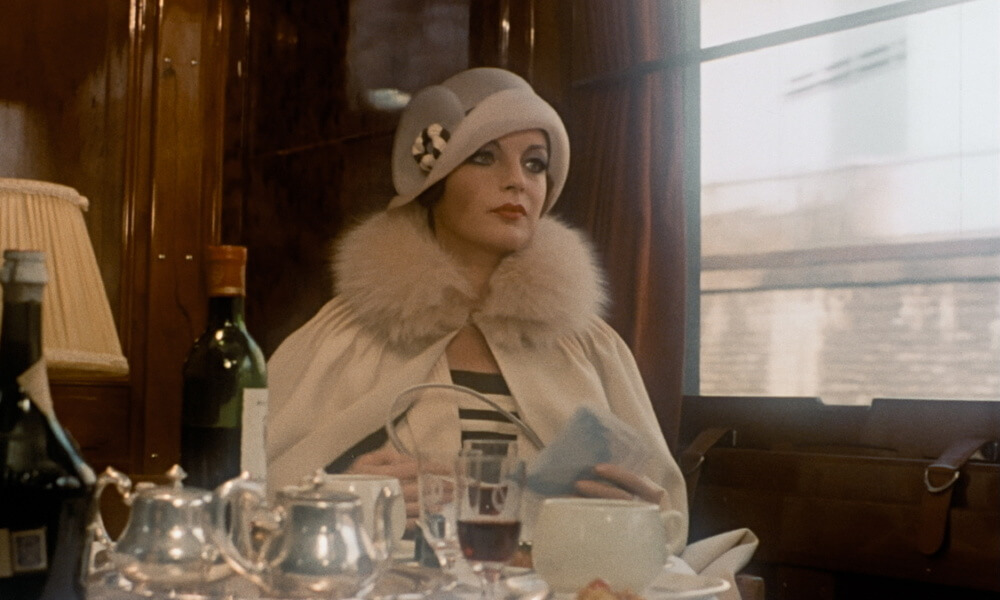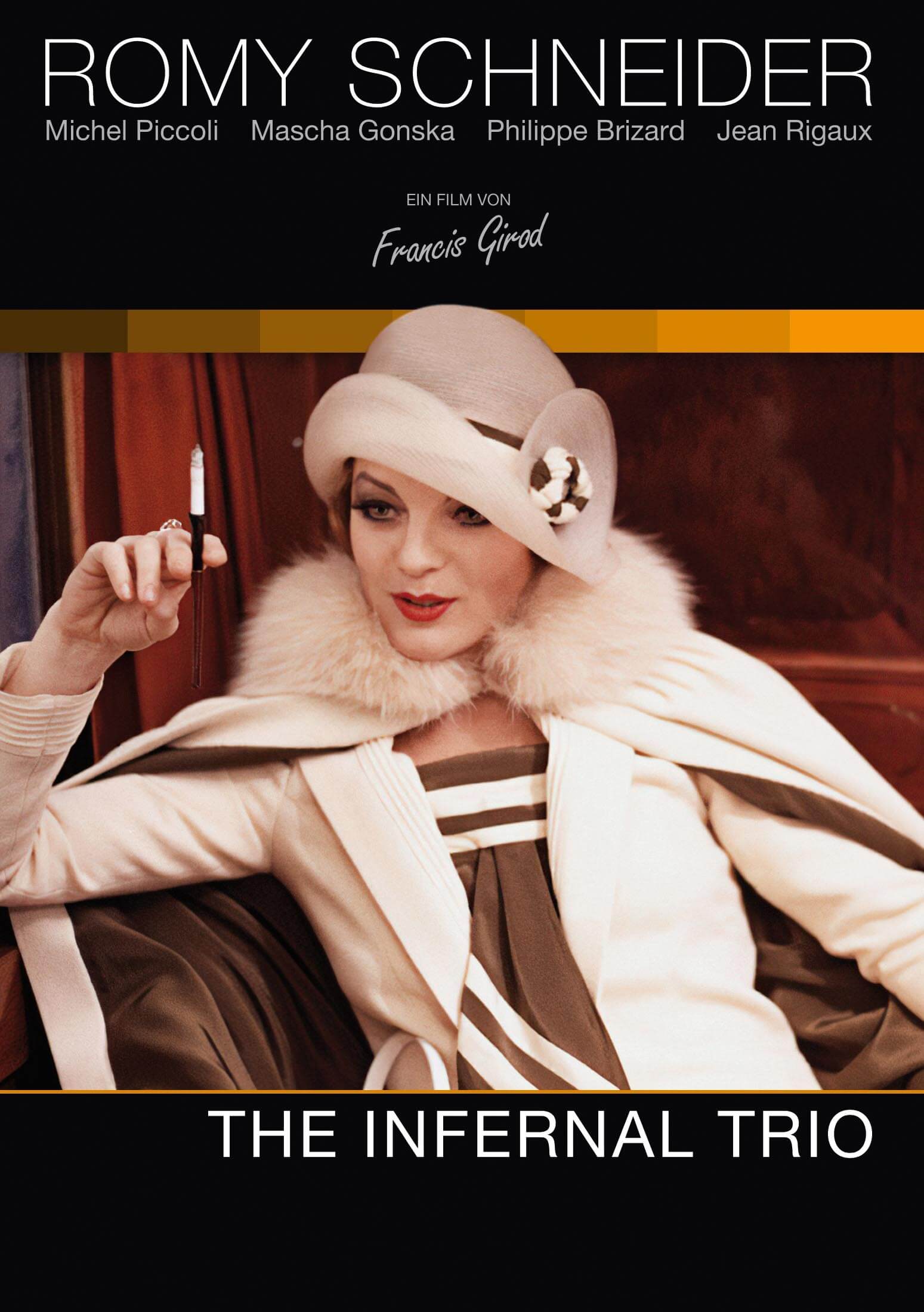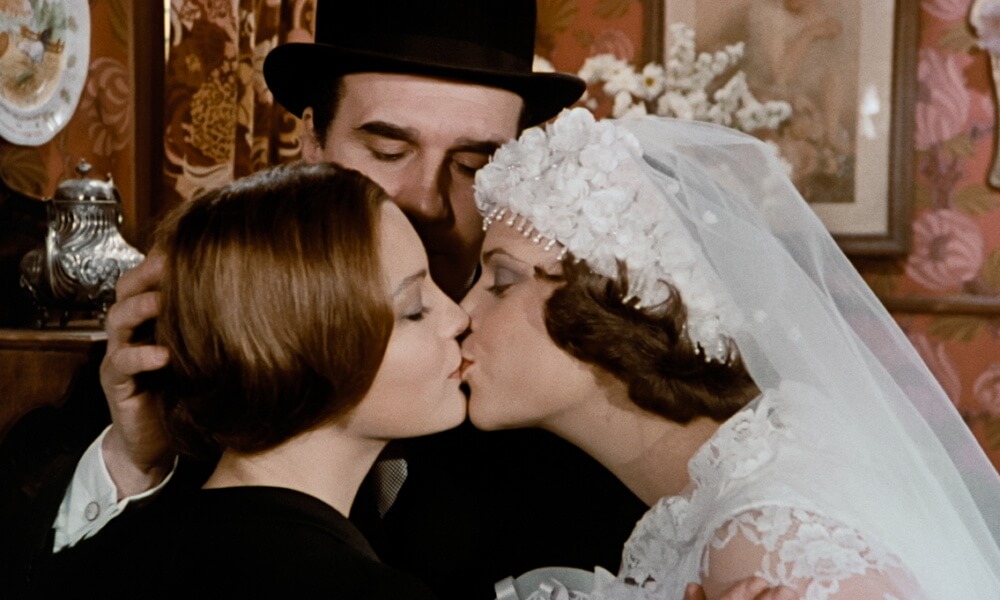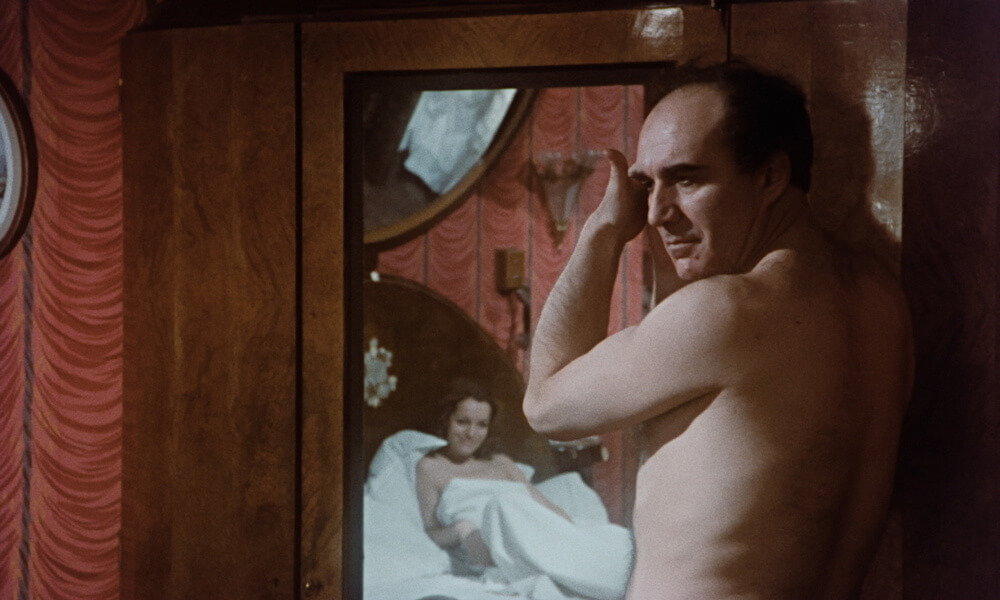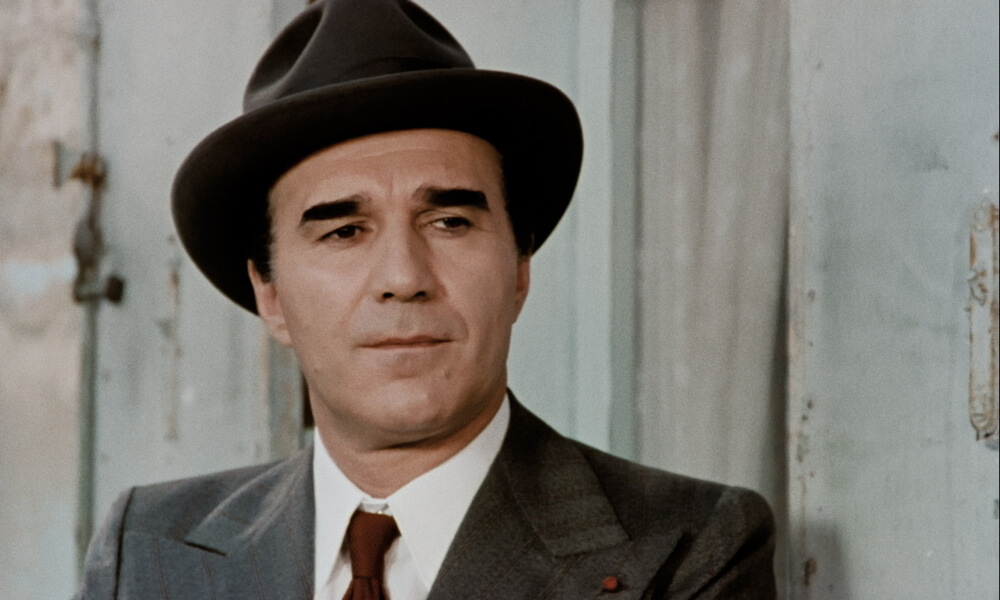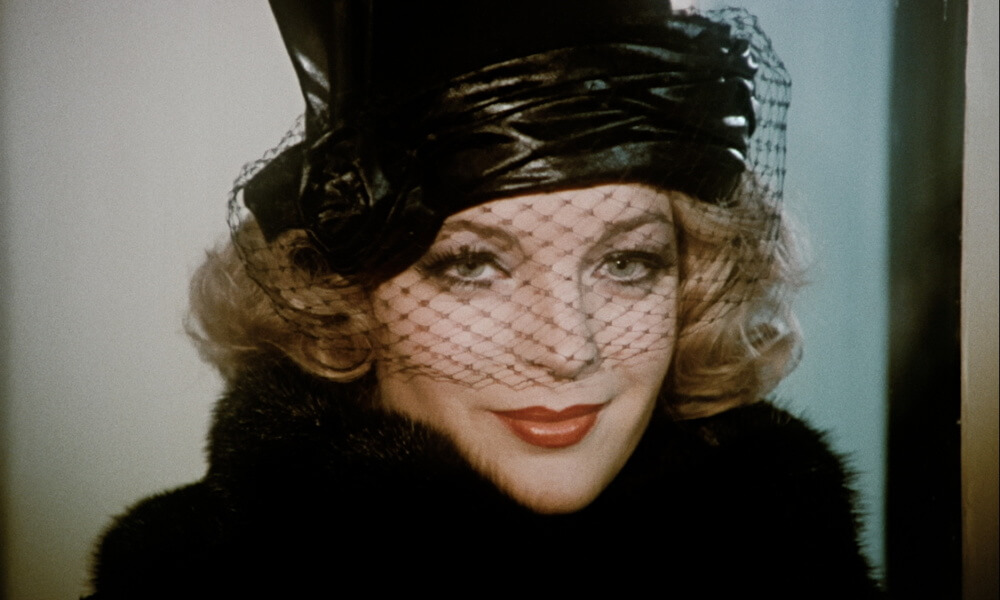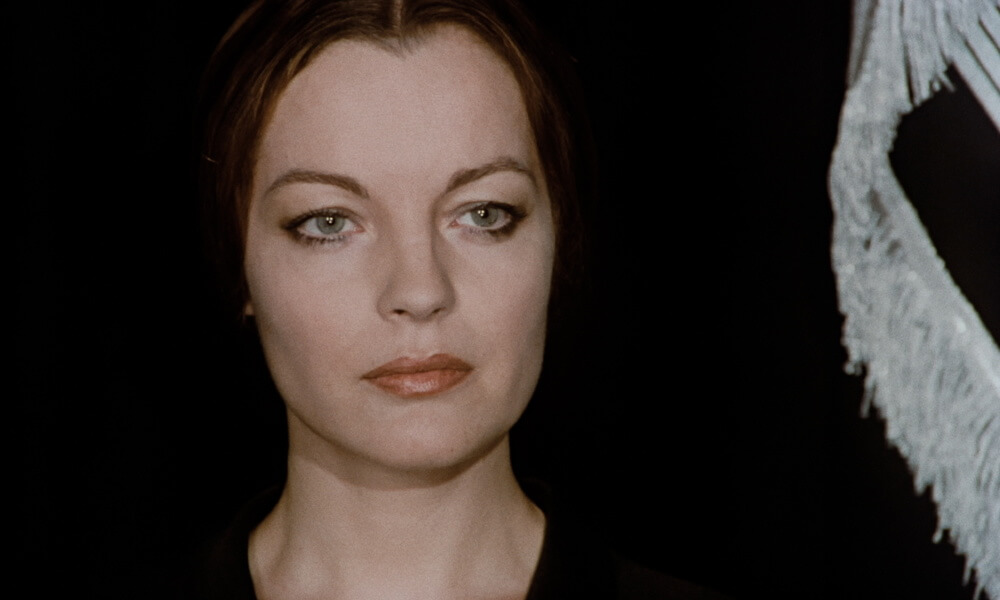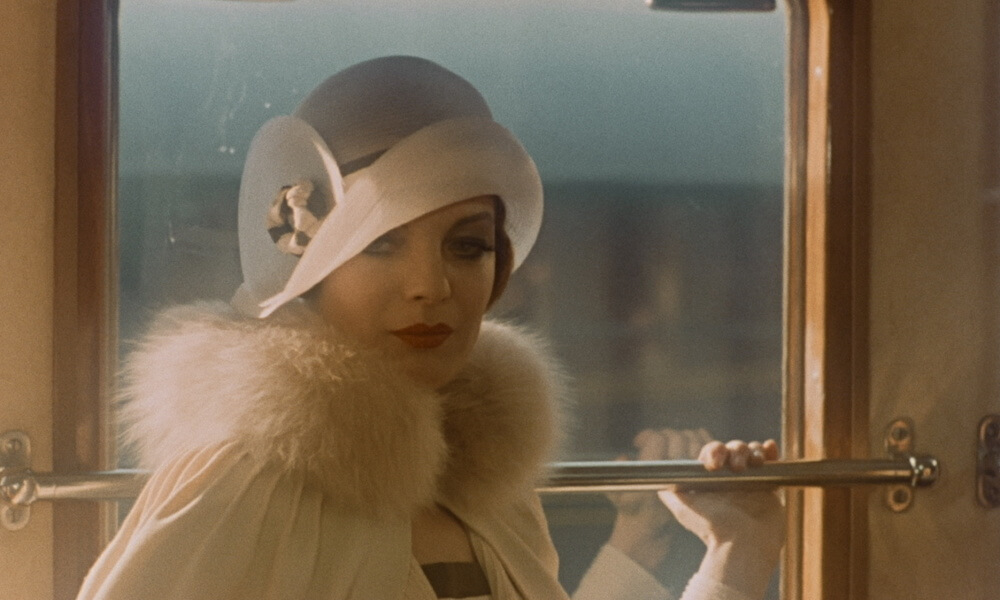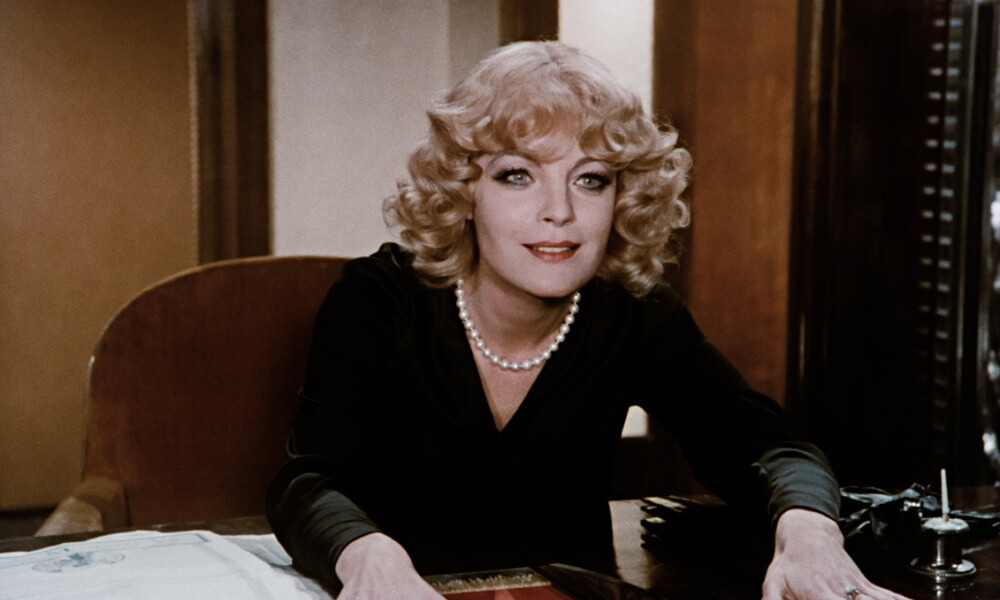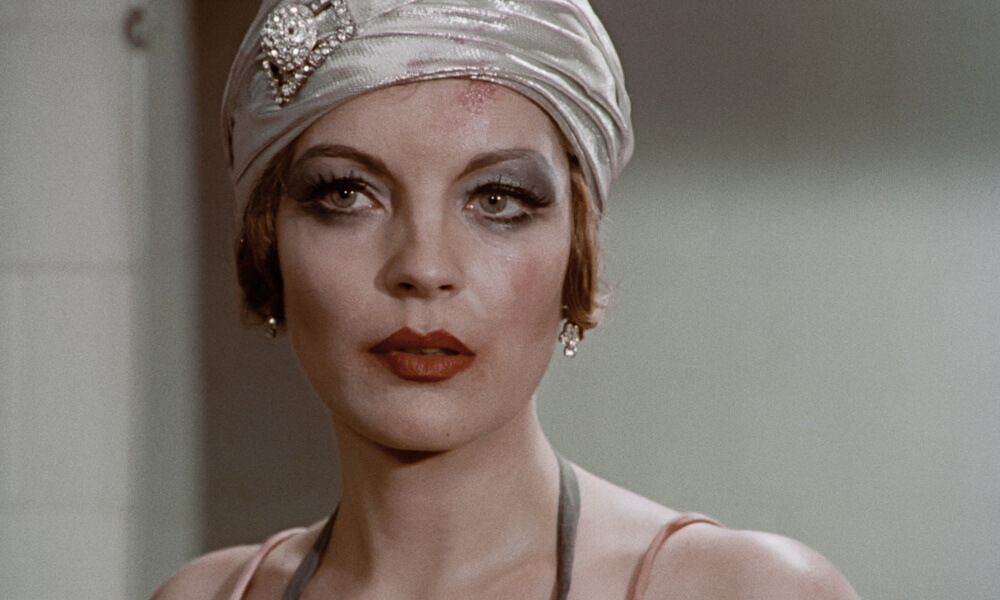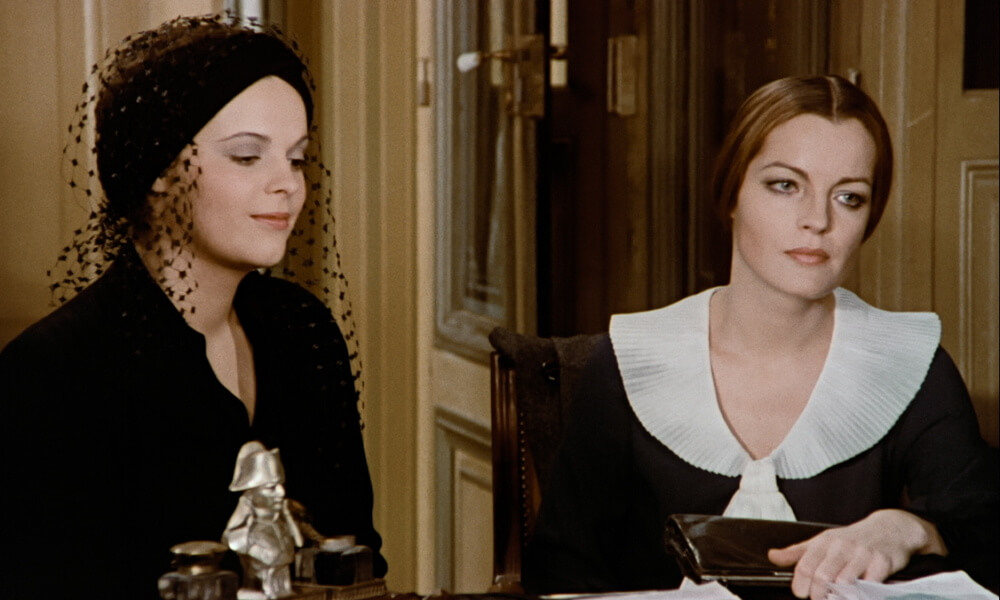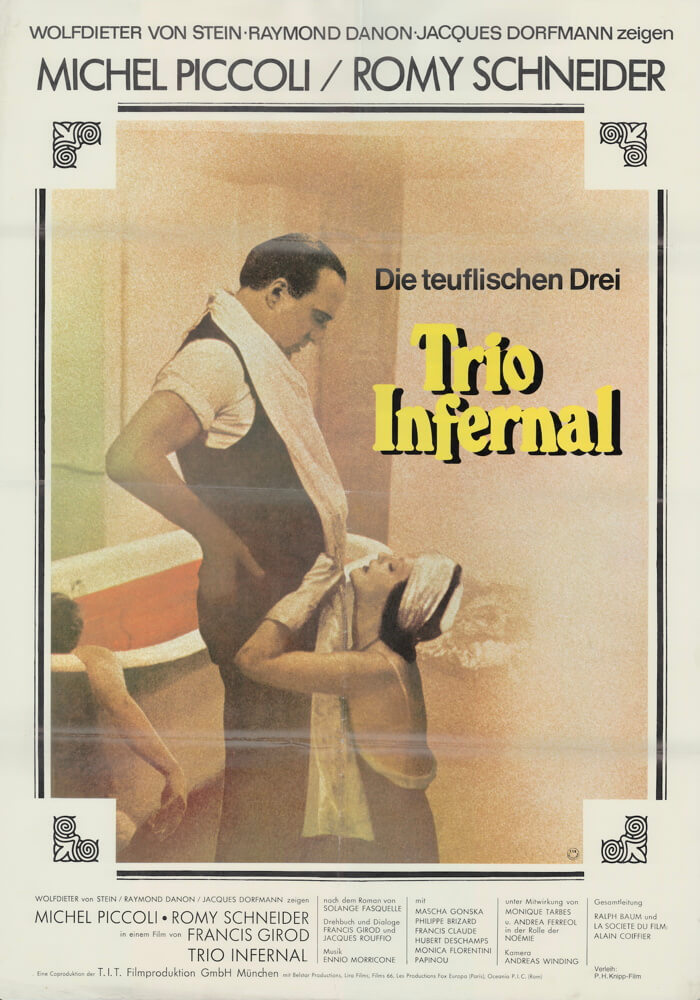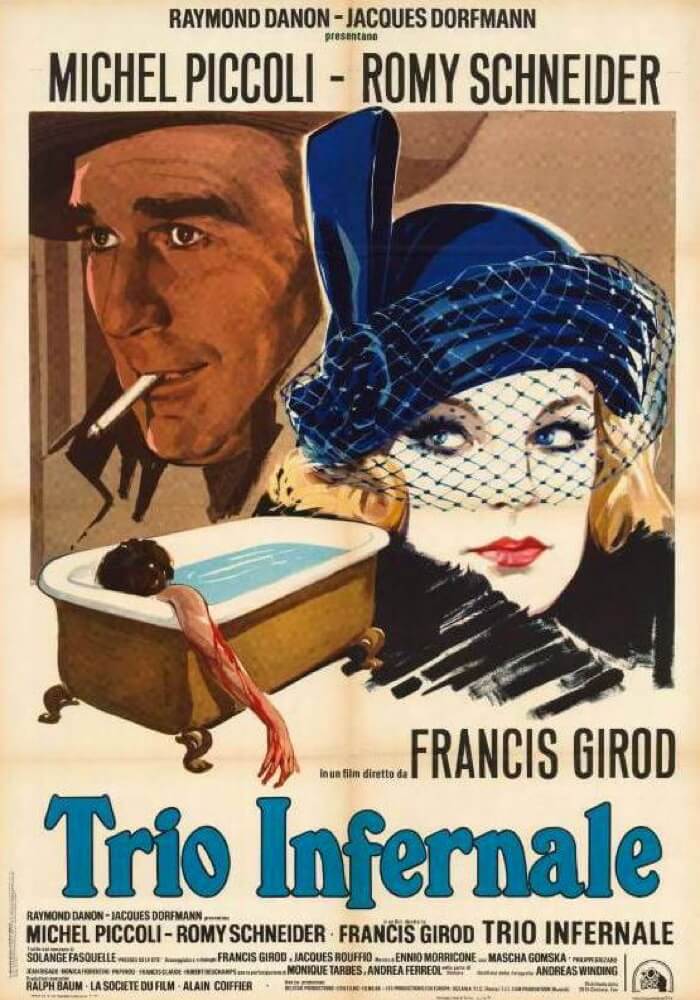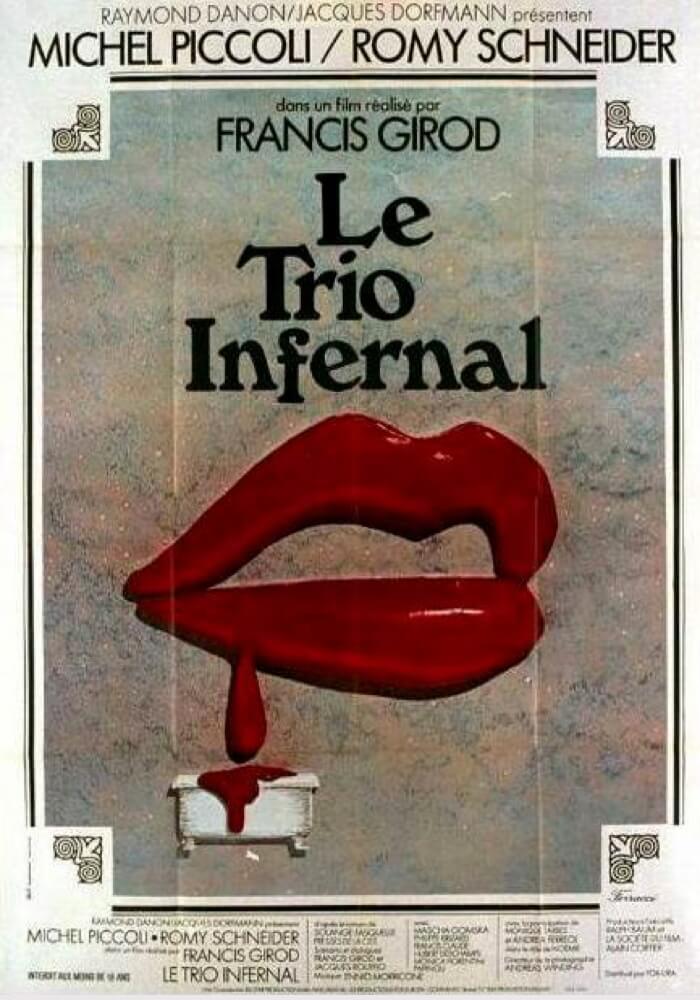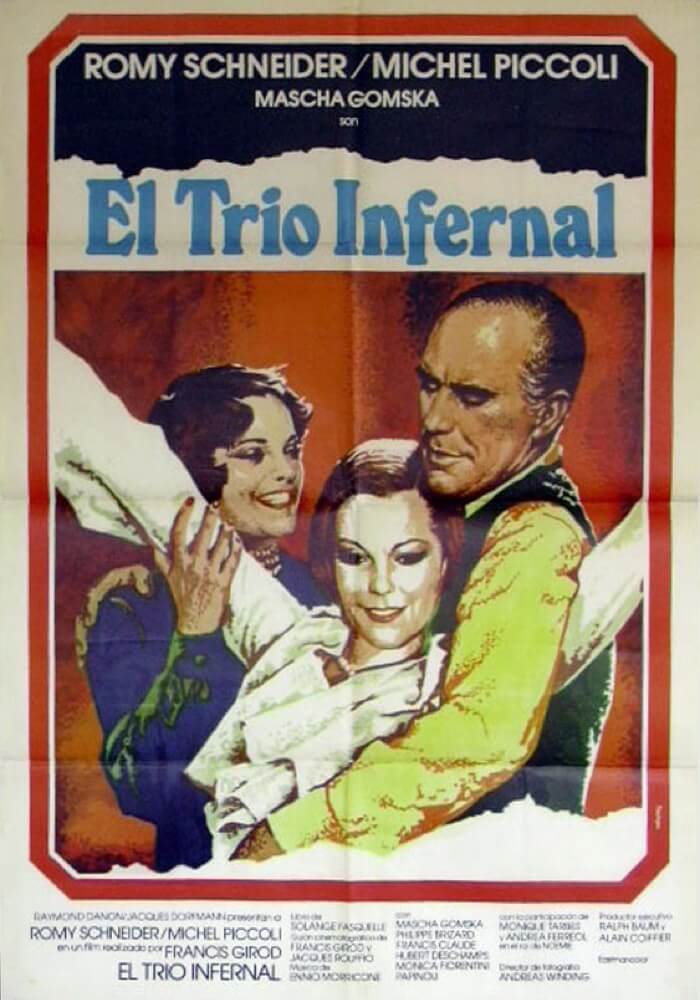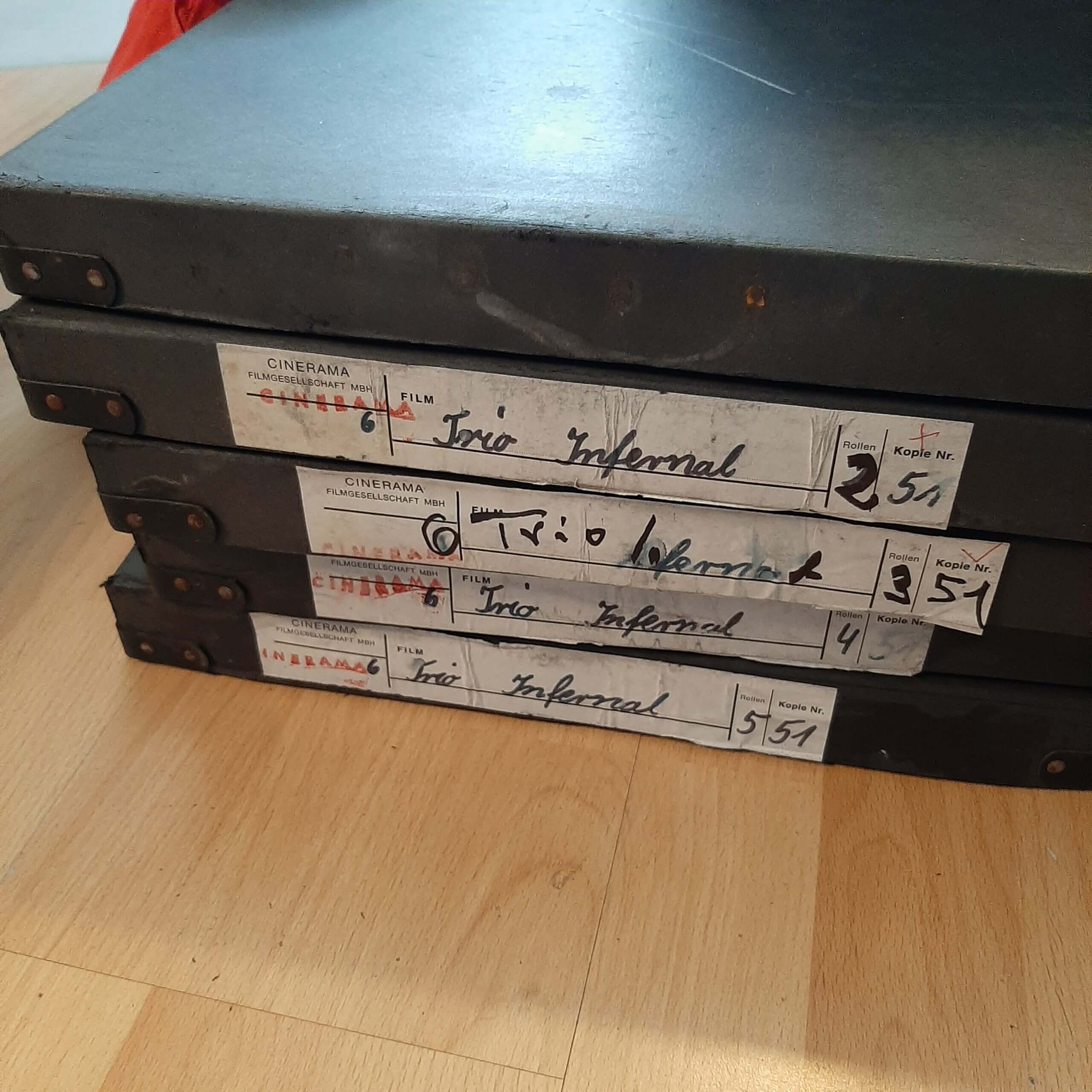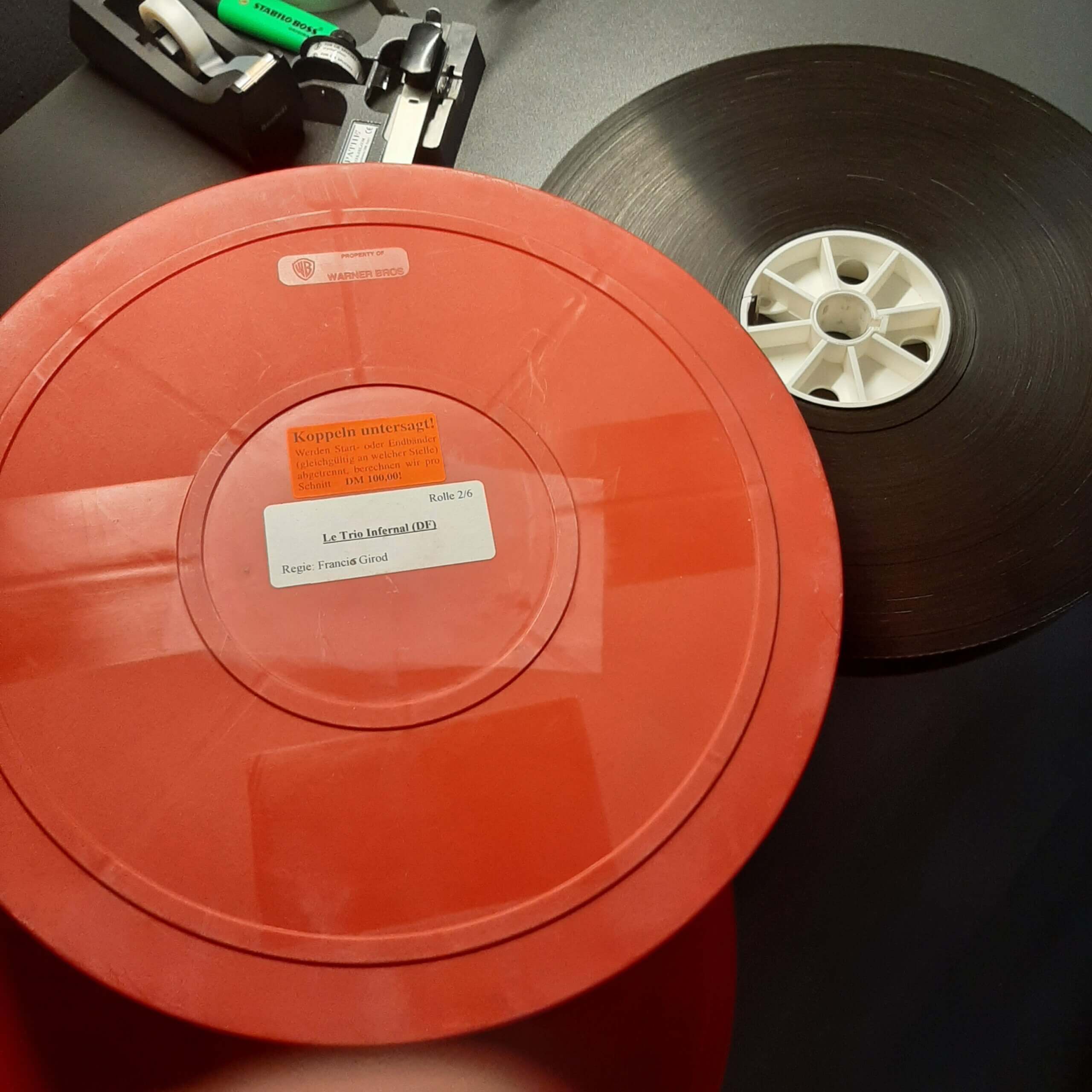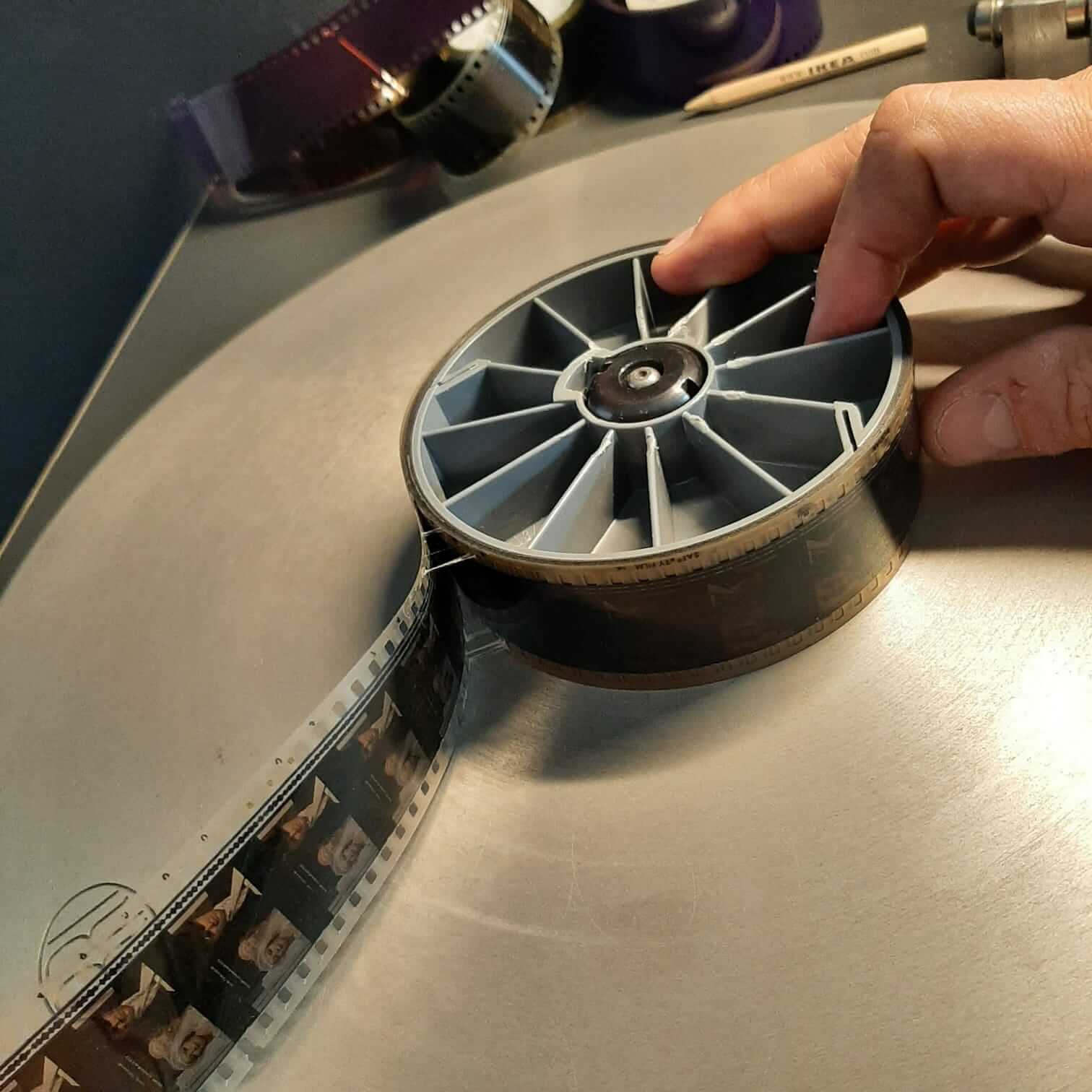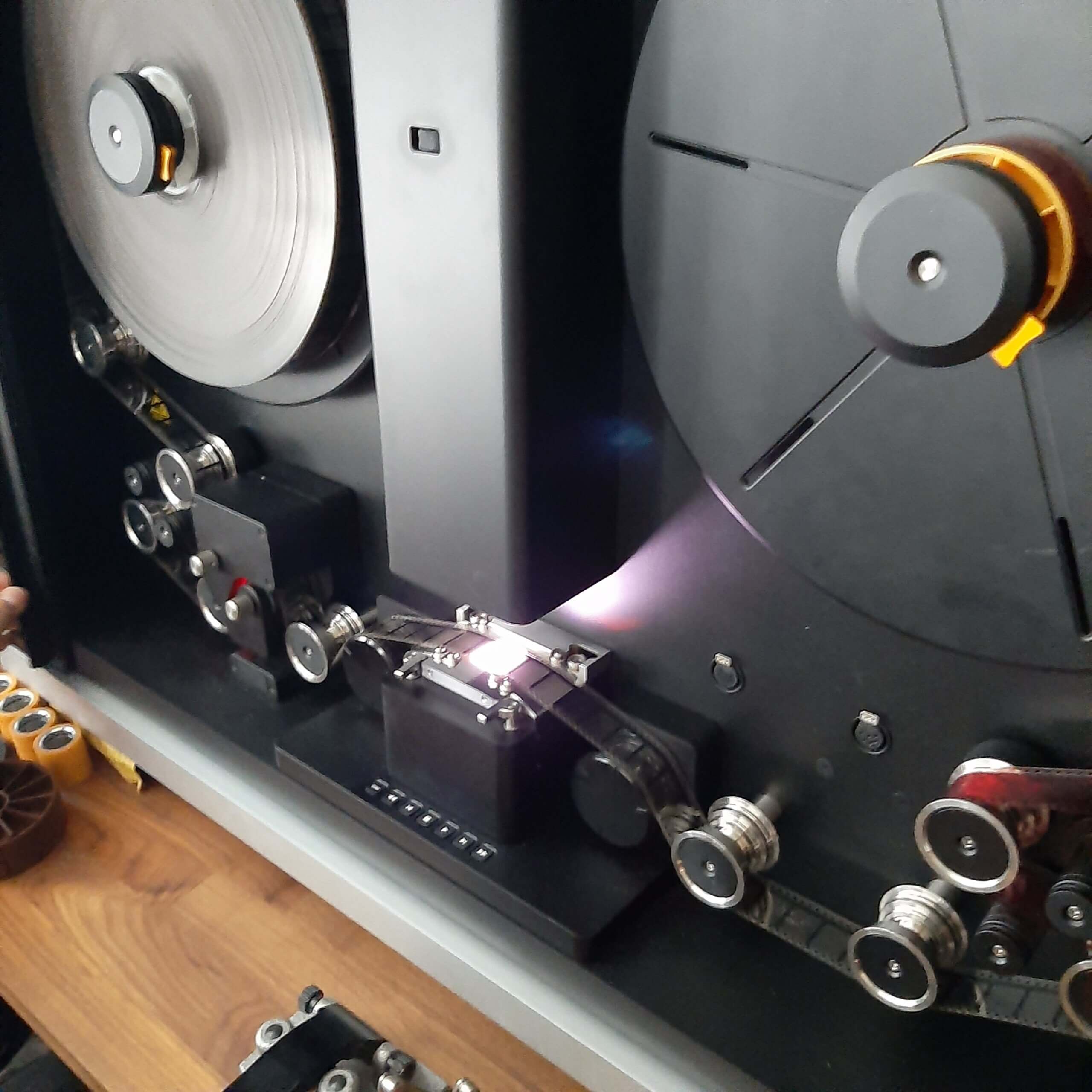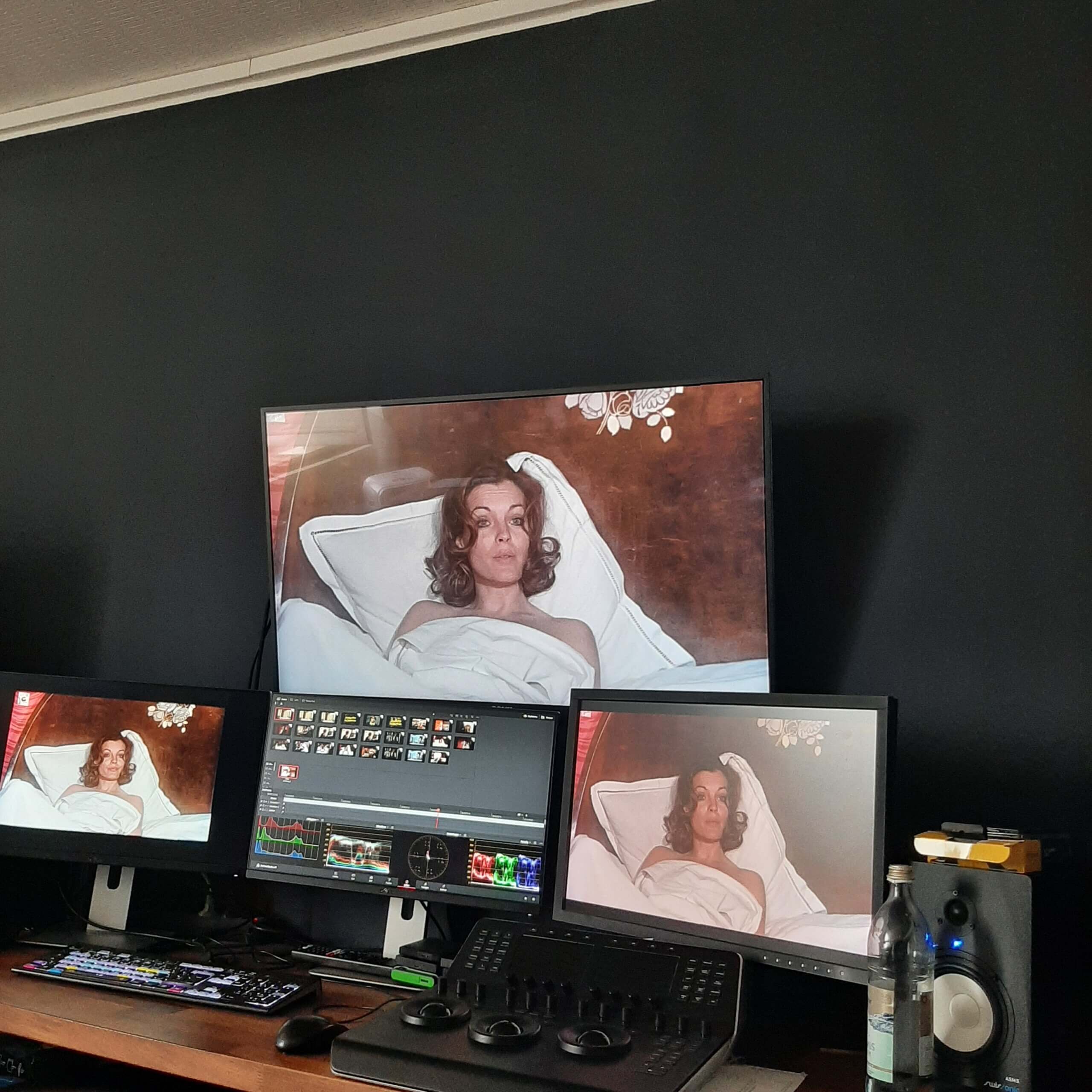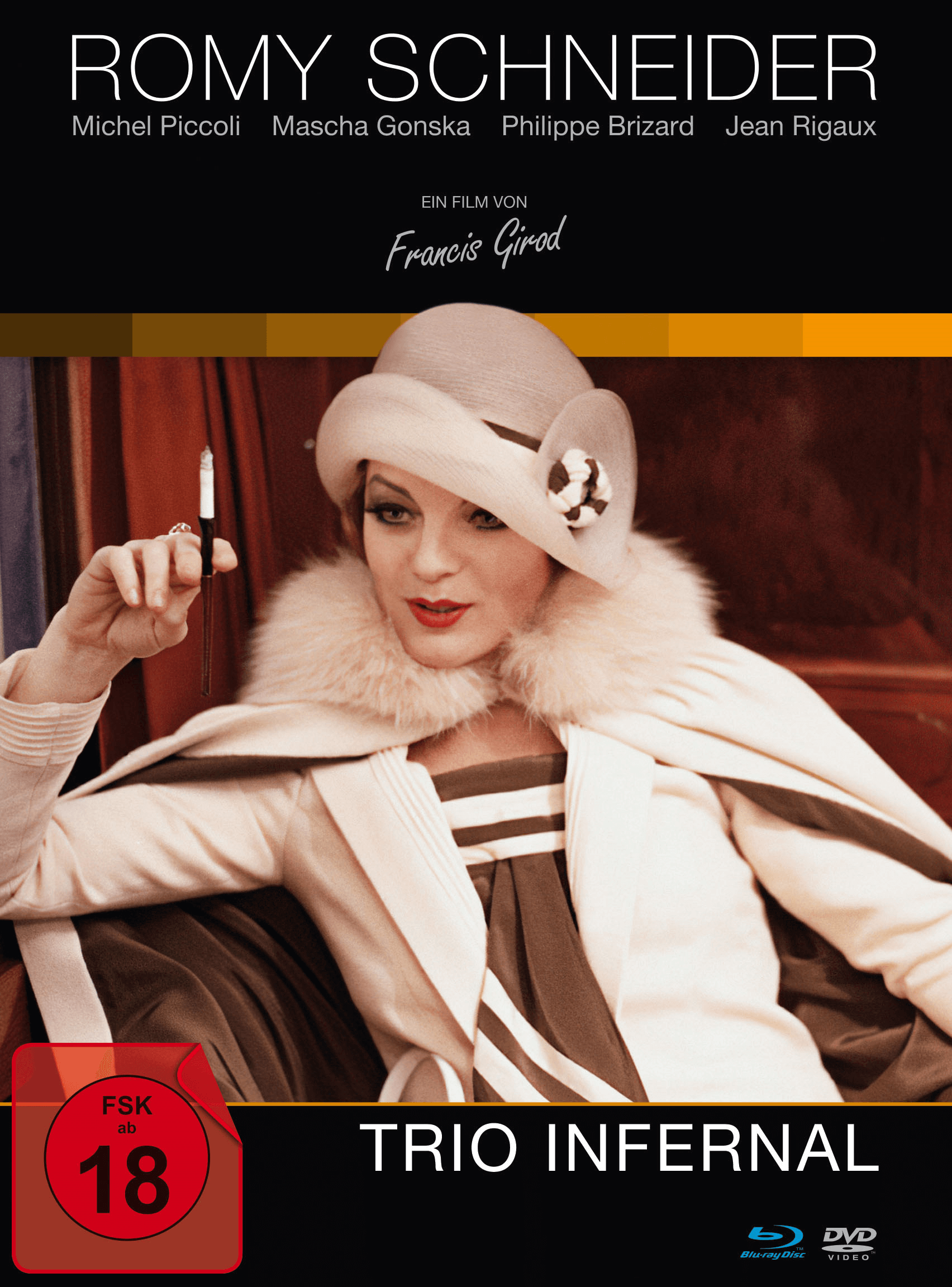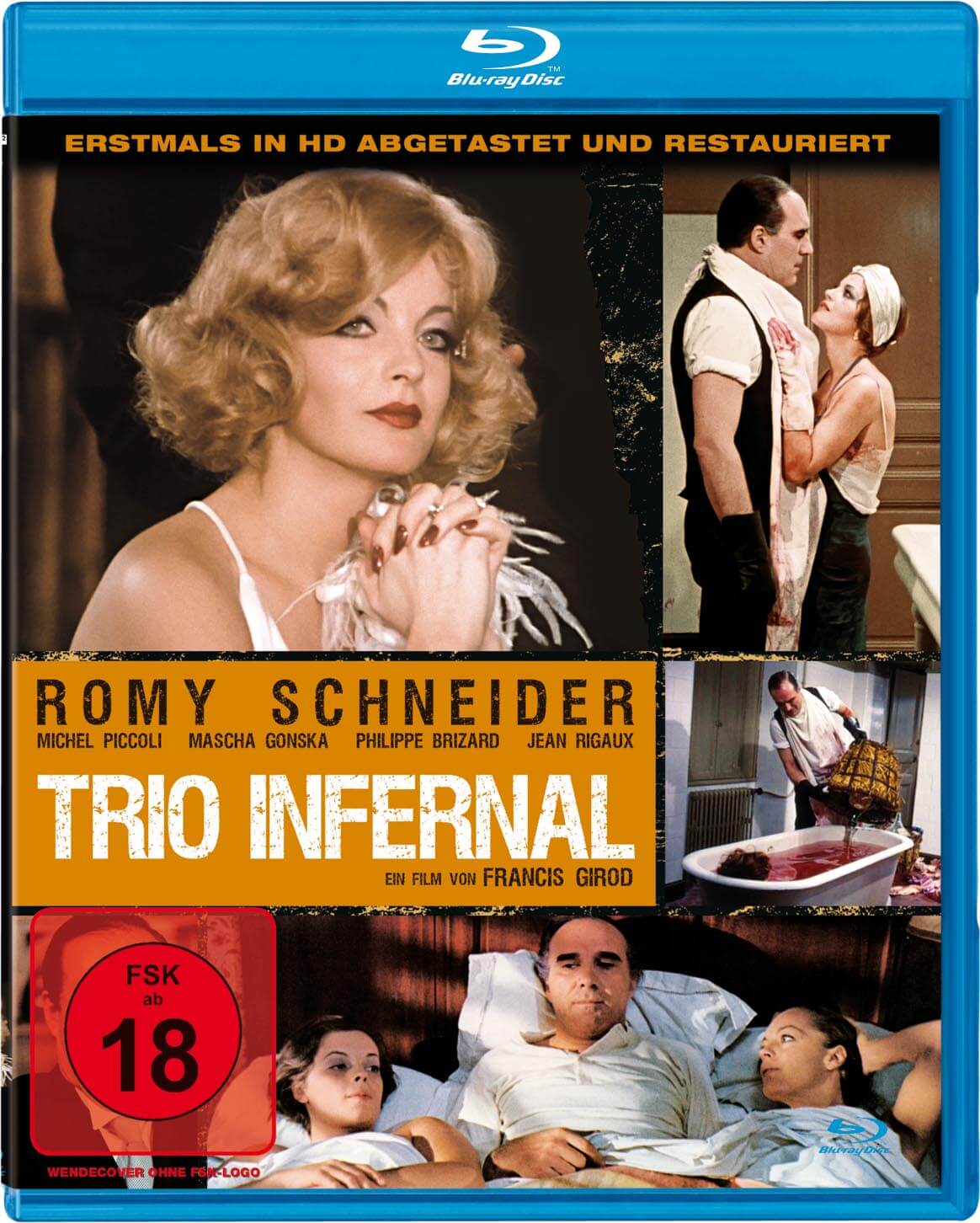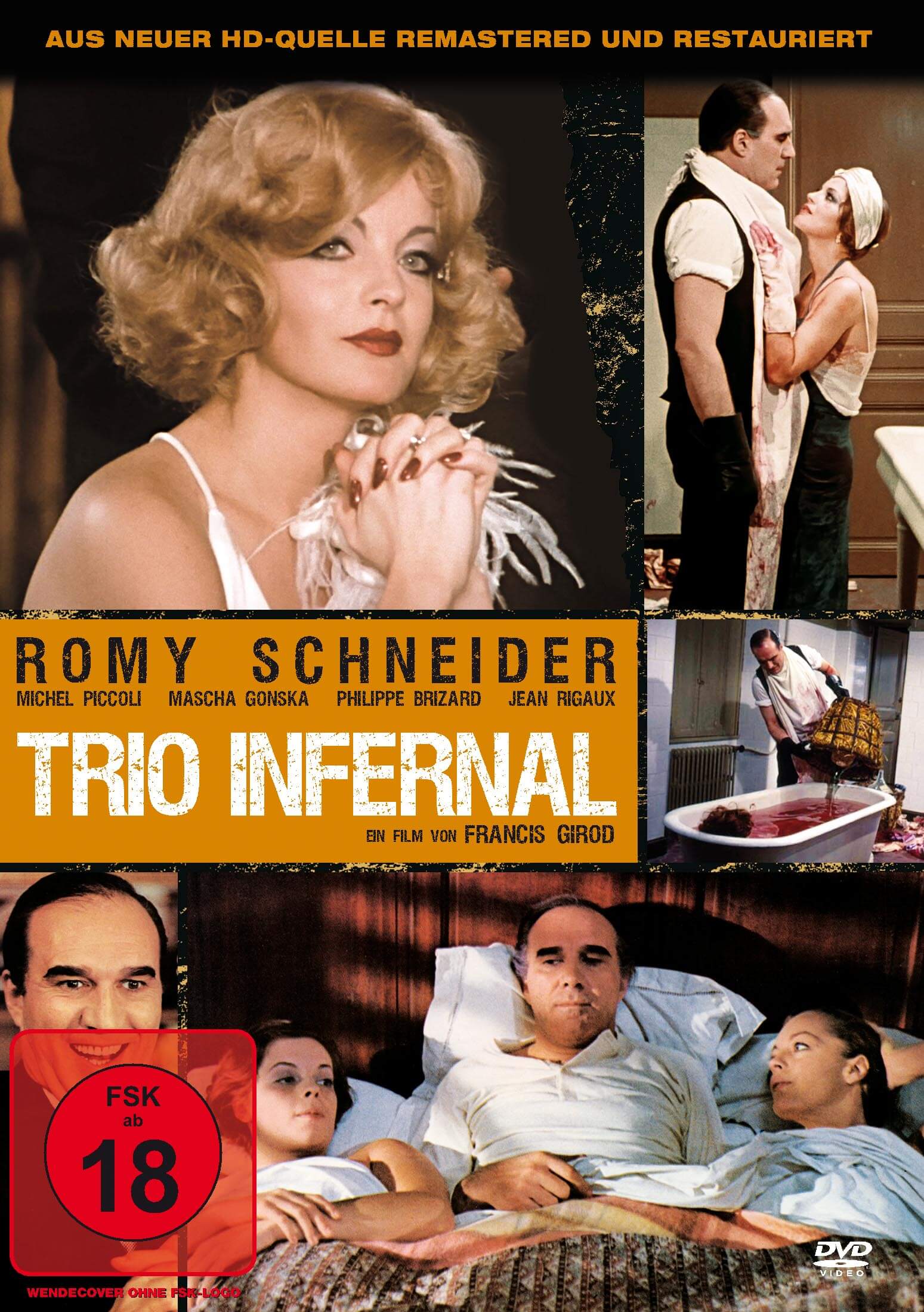Original Titel: Le trio infernal
Director: Francis Girod
Screenplay: Solange Fasquelle (Novelle), Francis Girod, Jacques Rouffio
Actors: Michel Piccoli, Romy Schneider, Mascha Gonska, Philippe Brizard, Jean Rigaux, Monica Fiorentini Hubert Deschamps. Monique Tarbès, Andréa Ferréol, Luigi Zerbinati, Francis Claude, Pierre Dac Pierre Dac, Jean-Pierre Honoré, Henri Piccoli, Martine Ferrière, iNcole Chomo, Isabelle Lebel, Adolfo Geri, Fanny Renan, Rolph Spath
Producder: Raymond Danon, Jacques Dorfmann, Wolfdieter von Stein
Co-producer: Ennio Nobili
Cinematography: Andréas Winding
Editing: Claude Barrois
Set decoration Philippe Turlure
Production design: Jean-Jaques Caziot
Costume design: Jacques Fonteray
Production manager: Alain Coiffier
Music: Ennio Morricone
Production companies: Belstar Productions, Film 66 – Fox Europe Paris, Lira Films, Oceania Produzioni Internazionali Cinematografiche, T.I.T. Filmproduktion
Year of production: 1974
Genres: Comedy, Crime, Horror
Countries: France, Italy, Germany (West)
Language: French
Synchronisations: English, Italian, German
Filming location: Paris (France)
Lenghth: 105 Min
Rating: FSK 18
Aspect Ratio: 1.66 : 1
Sound Mix: Mono
Resolution: Full HD (new 4K scanning)


